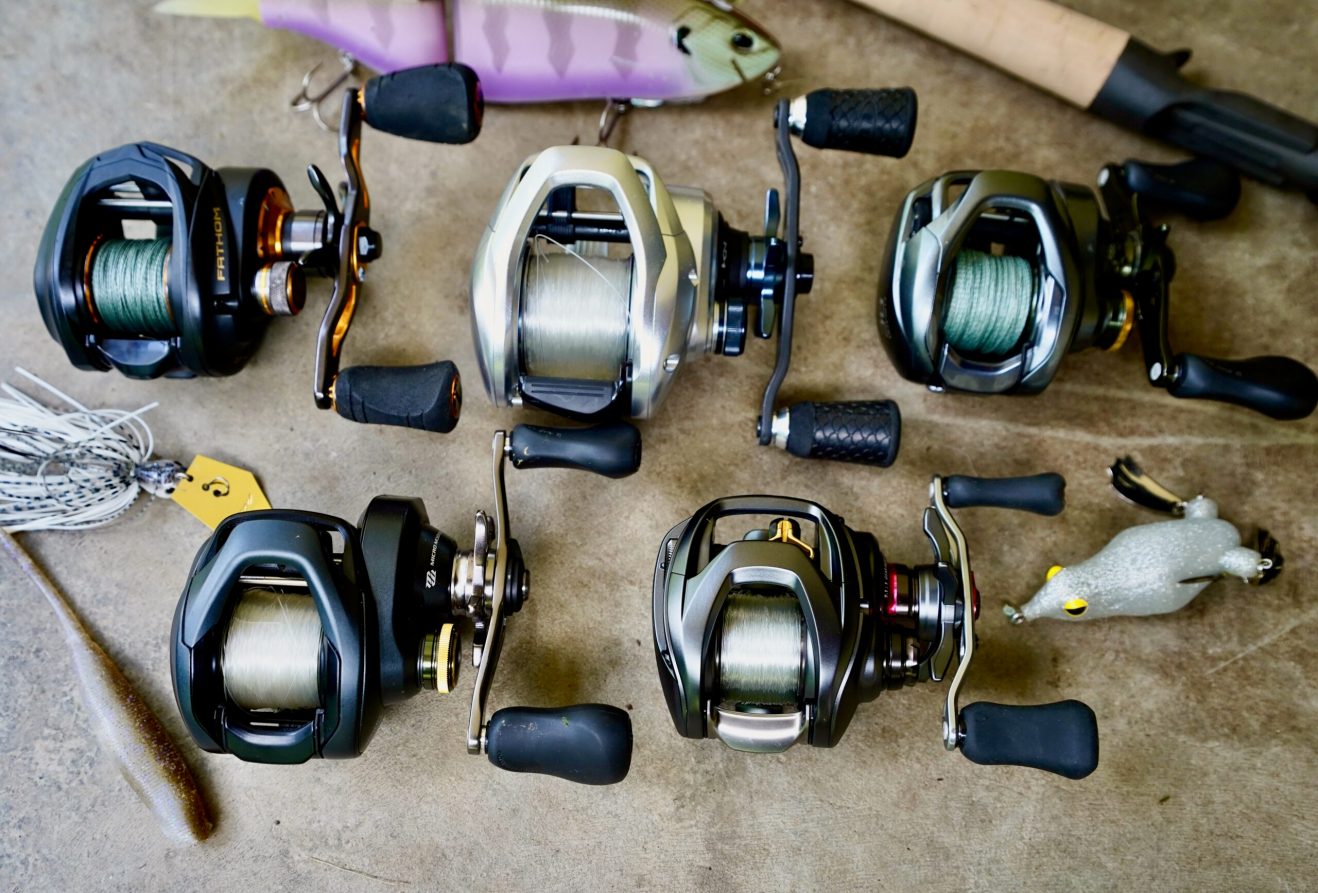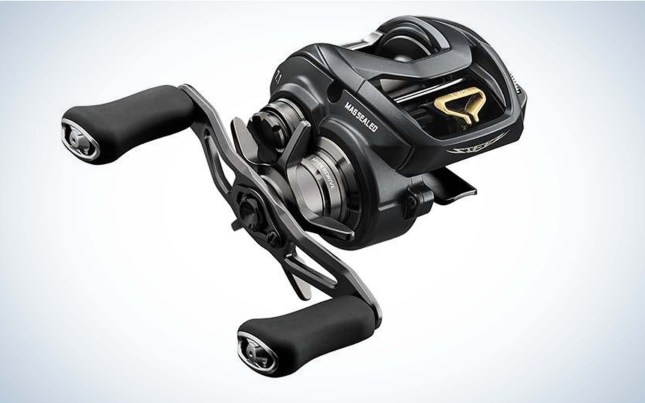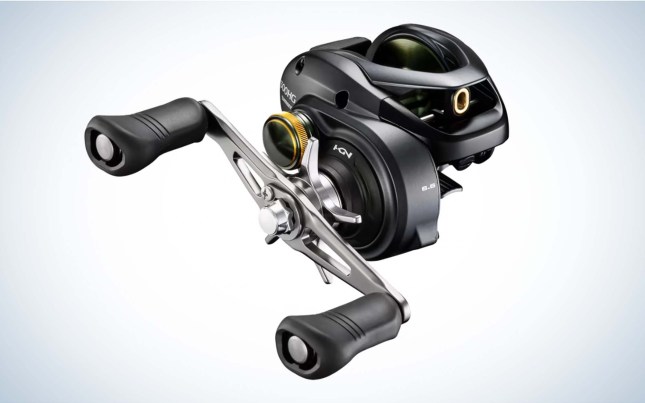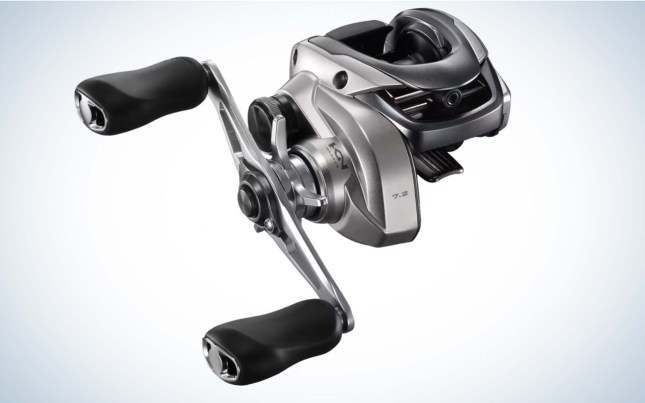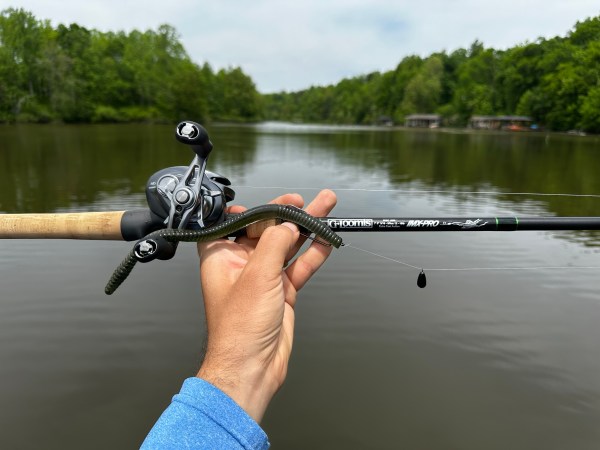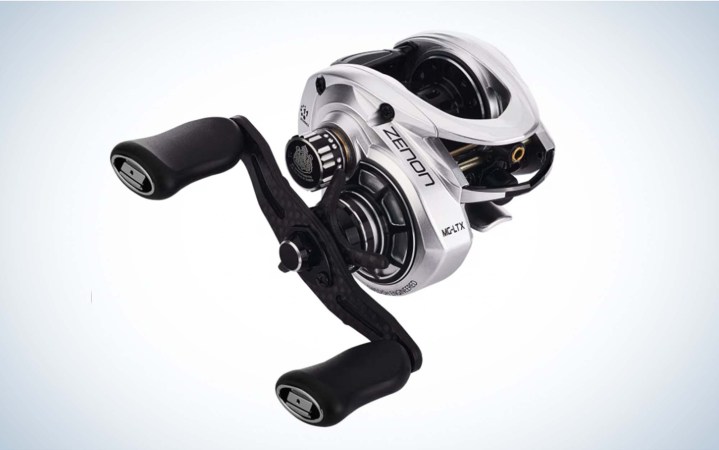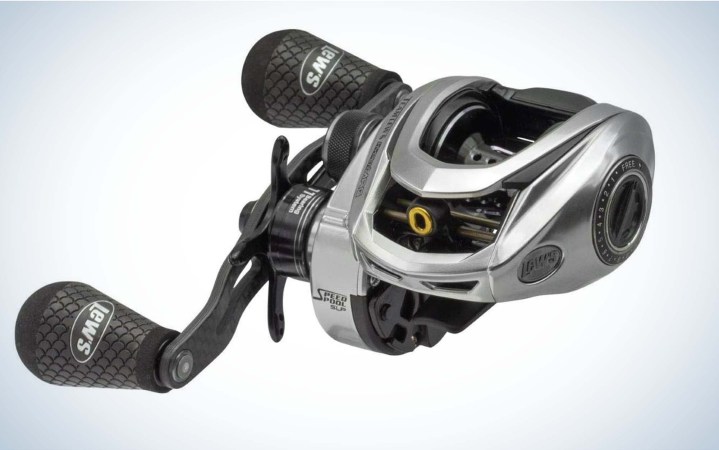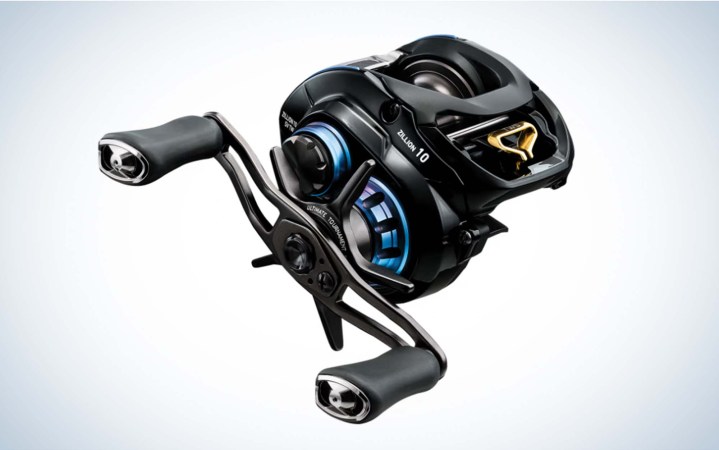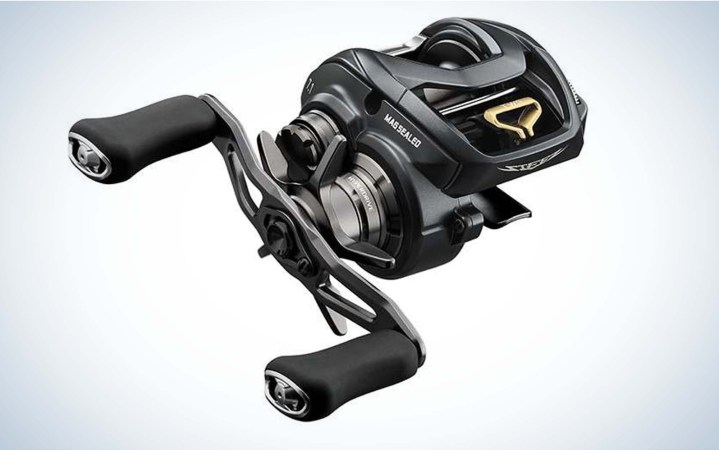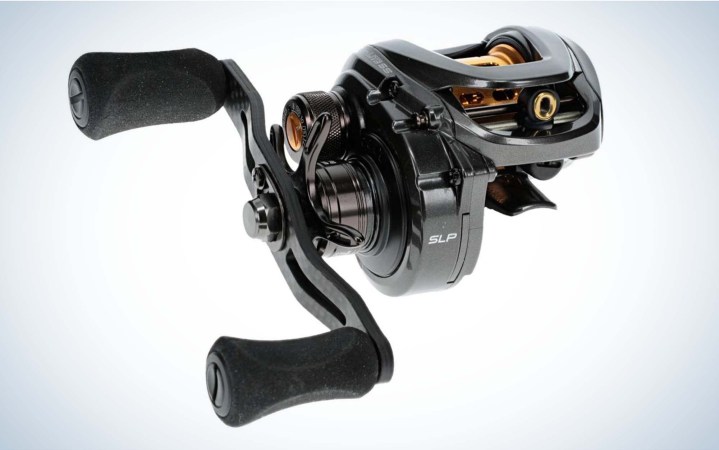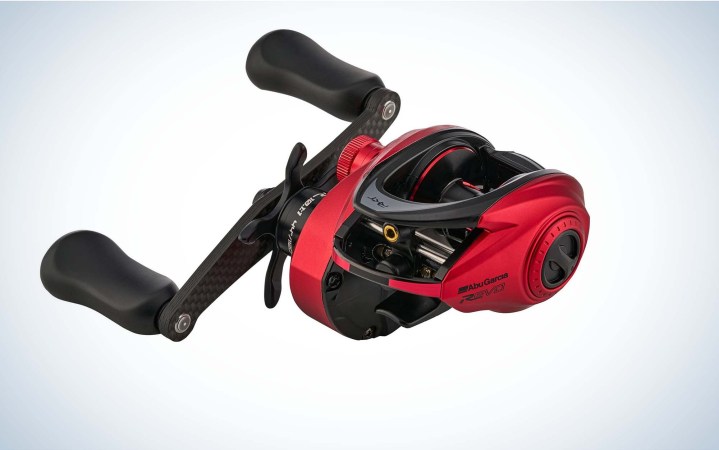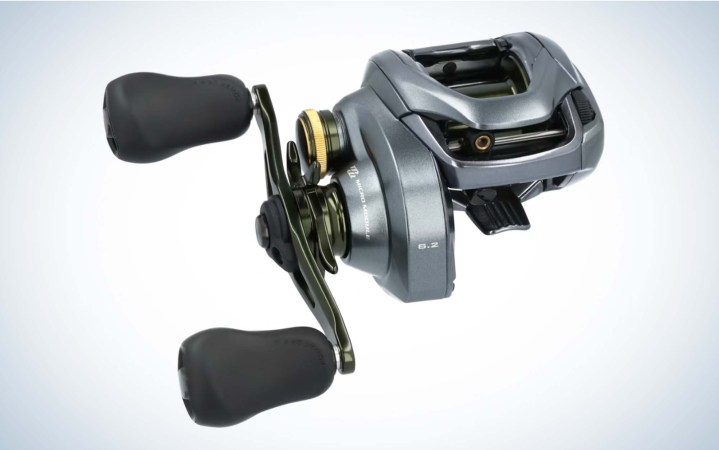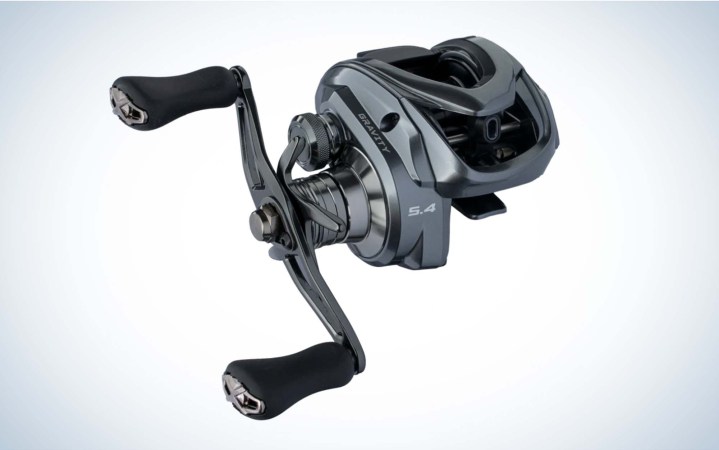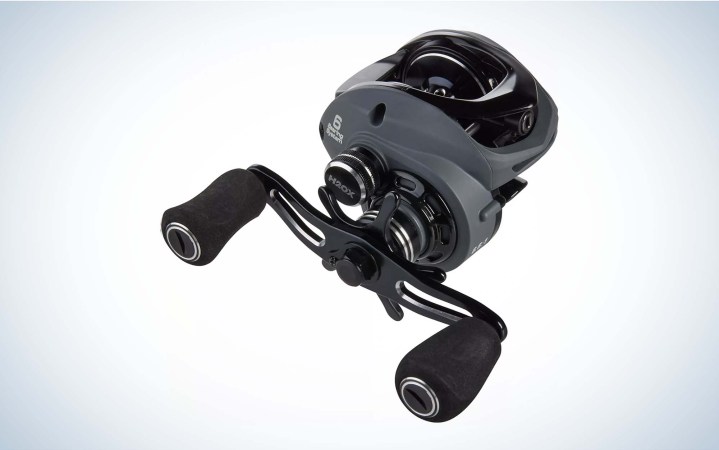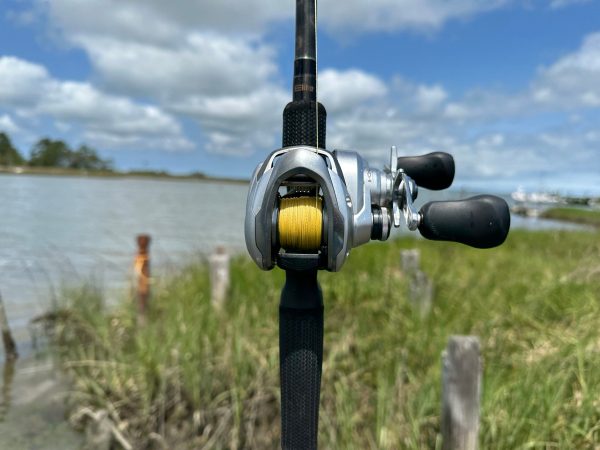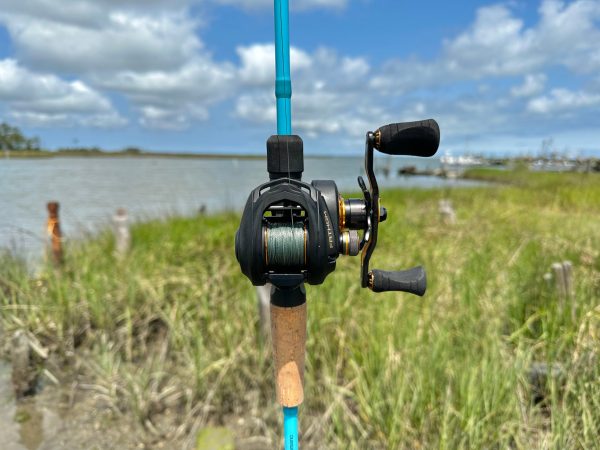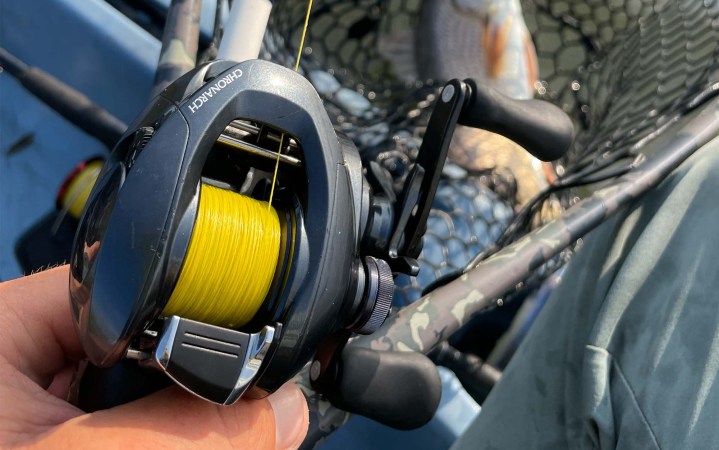We may earn revenue from the products available on this page and participate in affiliate programs. Learn More ›
The best baitcasting reels of even a decade ago pale in comparison to today’s top models, which have the precision of a Swiss watch, the styling of an Italian sportscar, and the dependability of American-made tools.
Whether you want to sling giant 6-ounce glide baits or toss tiny lures that were once only castable on ultralight spinning gear, there’s a purpose-built baitcaster for you. Not only are baitcasters designed for specific jobs, the drag systems are better, the components are more durable, and you usually get more power in a smaller package, along with a wider range of gear ratios.
Baitcasting reels can catch nearly every species that swims in North America, but we’ve decided to focus on low-profile reels for bass and inshore saltwater. Experts in their respective fields explore both reel categories in separate sections. Each category also includes thorough hands-on testing.
Here are our picks for the best baitcasting reels:
Bass Reels
- Best Overall: Shimano Bantam MGL A
- Best Value: Seviin GF Series
- Best Lightweight: Abu Garcia Zenon MG-LTX
- Best Tournament: Lew’s HyperMag
- Best Under $100: Academy H2OX Mettle
- Best High Speed: Daiwa Zillion 10.0
- Best Premium: Daiwa Steez A 100
- Best for Swimbaits: Shimano Curado 300K
- Best Bait Finesse Reel: Lew’s Custom Lite SS
- Best High Speed: Abu Garcia Revo Rocket LP
- Best Computer Controlled: Shimano Curado 150 DC
- Most Innovative: Ark Gravity 5
- Best for $50: H2OX Premier
Saltwater Reels
- Best Overall: Shimano Tranx
- Best for Jigging: Penn Fathom
- Best Finesse Inshore Reel: Shimano Chronarch G
How I Chose the Best Baitcasting Reels for Bass
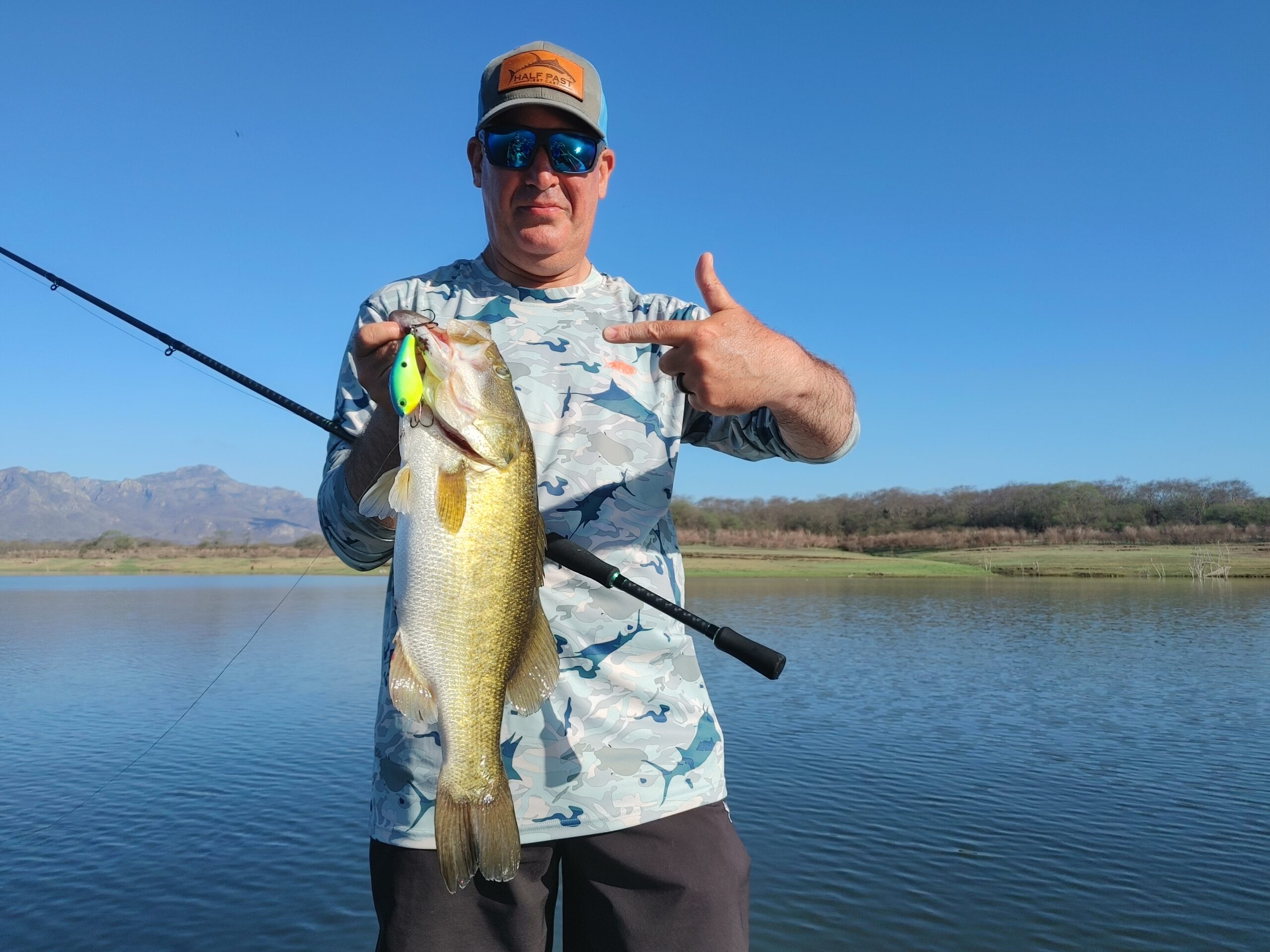
Over the past six months I’ve tested a slew of the best baitcasting reels, both in their intended purposes and outside of them, to see which ones could best be integrated into savvy anglers’ arsenals far and wide. I’m not brand-loyal in this space, because I’ve learned that certain manufacturers do better than others in certain spheres and at different price points.
I used fluorocarbon, braid, and/or copolymer lines where appropriate, and didn’t do a darn thing in terms of maintenance. I wanted to see if they performed as advertised, not only fresh out of the package, but also after being banged around through big waves and nasty stump fields. The reels that aced the torture test with flying colors can be found below.
Best Baitcasting Reels for Bass: Reviews & Recommendations
Here are the top picks from OL contributor, Pete Robbins who has chased bass all over the continent.
Best Overall: Shimano Bantam MGL A
Key Features
- Left- and right-hand retrieves
- 6.2:1, 7.1:1, and 8.1:1 gear ratios
- 7.6 ounces
- Eight ball bearings plus one roller bearing
Pros
- Three speed options
- Extremely durable
- Super free spool for long casts
Cons
- Not inexpensive
I tried to beat this reel up; I truly did. I used it to subdue close-quarters largemouths, snakeheads, and slimy blue catfish. I even accidentally dropped it overboard and bounced it through rough waves. But no matter what I did, it never lost a step from its out-of-the-box smoothness. Yes, it’s heavier than some of the options on this list. But at 7.6 ounces, it’s still far lighter than the top-notch reels of yesteryear, and that added weight seems to provide some extra stability and durability. There’s simply no flex or give, or disappointment, no matter what you do to it. If you have the bucks, you could build a full arsenal out of Bantam MGLs at various retrieve speeds.
Best Value: Seviin GF Series
Key Features
- Left- and right-hand retrieves
- 6.6:1, 7.3:1, and 8.1:1 gear ratios
- 7.4 ounces
- Four stainless steel bearings plus one roller bearing
Pros
- Extremely smooth even after heavy use
- Very comfortable handle
- Line indicator knob is a nice touch
Cons
- Not as many bearings as some other reels
This reel costs about a third, or a quarter, of what some of the other reels on this list command, but it’s a beast at that price. If you’re in any way cost-conscious this is an obvious choice. It’s built with a one-piece graphite frame and side covers and a ported aluminum spool. I found the drag to be strong and reliable. I particularly liked the carbon fiber handle and EVA knobs, finding them to be more comfortable and less slippery in all conditions than those on comparable reels. It’s smooth and I could fire small baits a country mile, even against the wind, without backlashing.
Best Lightweight: Abu Garcia Zenon MG-LTX
Key Features
- Left- and right-hand retrieves
- 8.3:1 gear
- 4.7 ounces
- Eight stainless steel HPCR bearings, two CeramiLite spool bearings, and one roller bearing
Pros
- Ultralight
- Casts finesse baits long distances
- Easy to adjust braking system
Cons
- Only one gear ratio
Any angler who has been using other baitcasters for a long time will be shocked at how feathery light this reel is, but it’s no toy. I’ve battled big fish on it with a wide range of lures. It’s great for BFS applications and can fire a 1/8 ounce jig or unweighted stick worm far and accurately. I also used it for some heavier presentations and found that it excelled there, too. I wouldn’t use it for flipping, but with small poppers or balsa crankbaits, it’s a joy to use. After a little bit of adjustment, you can fire them into the wind with no fear of backlashing. If you’ve always regretfully turned to spinning gear for smaller lures, or when there’s a headwind, this is the baitcasting reel that will change your mind.
Best Tournament: Lew’s HyperMag
Key Features
- Left- and right-hand retrieves
- 7.5:1 and 8.3:1 gear ratios (7.5:1 only in right-hand retrieve)
- 5.2 ounces
- 10 stainless steel bearings plus one roller bearing
Pros
- Very lightweight yet powerful
- 20 pounds of max drag
- Easily palmed
Cons
- Only one speed in left-hand retrieve
The HyperMag looks like a futuristic rocket and lives up to that aesthetic. It’s the top dog in the Lew’s lineup and they’ve packed it with features: magnesium construction, a titanium-coated zirconia line guide, and an external lube port. It’s modern, but still easy to operate. Indeed, the externally-adjustable centrifugal brake system is one of the most intuitive and precise cast control mechanisms I’ve used. Because it’s just 5.2 ounces, it’s easy to forget that it’s built to manhandle big fish. The HyperMag has 20 pounds of drag power, so don’t sleep on it for flipping and pitching. If you use it for those techniques, you’ll be less worn out at the end of the day than you might be with heavier reels.
Best Under $100: Academy H2OX Mettle
Key Features
- Right-hand retrieve
- 7.3:1 gear ratio
- 10 stainless steel bearings
- Aluminum frame, spool, and handle
Pros
- Incredible bargain pricing
- Lots of bearings provide great value and smoothness over time
- Very durable
Cons
- Limited handle and speed options
Over the past few years, I’ve been repeatedly wowed by products — both rods and reels — in Academy’s H2OX lineup. I’m not sure how they cram this many features into reels that are so inexpensive, but they somehow manage. The H2OX lineup is tournament-ready, as evidenced by the fact that perennial Bassmaster Classic qualifier Stetson Blaylock uses them on the Elite Series. It’s a step less smooth from reels that cost three to five times as much, but that won’t be noticeable to many anglers, especially beginners. I like the fact that they’re durable and easy to use. I have one on both my spinnerbait and chatterbait rods, and find that they took a beating and kept on ticking well. If you know someone who’s just getting started, this is the perfect entry point that they may never grow out of.
Best High Speed: Daiwa Zillion 10.0
Key Features
- Left- and right-handed retrieves
- 10.0:1 gear ratio
- 7.6 ounces
- 10 ball bearings plus one roller bearing
Pros
- Ups the ante on speed
- Ultimate tournament drag system means no sacrificing power
- Lightweight to prevent fatigue
Cons
- Not ideal for many presentations that demand slower retrieves
When reels in the 8:1 range first came on the market, they generally made a deal with the devil, sacrificing strength and durability in favor of speed. Now it’s possible to have it all, and this 10:1 speed demon shows that anglers can get in more casts over the course of the day and still not have to worry when a big fish is on the line. It’s great for flipping, pitching, Carolina rigging, topwaters, and any technique where the rod does most of the lure manipulation as opposed to the reel. Then, when the lure is out of the strike zone or a hooked fish is making a beeline for the boat, it’s possible to pick up line in a hurry. I like it for frogging, too. The Zillion handles braid as well as fluorocarbon and monofilament. The proprietary T-Wing system allows for long casts. If you’re just going to get just one reel, this is not it. But if you feel the need for speed, buy with confidence.
Best Premium: Daiwa Steez A 100
Key Features
- Left- and right-hand retrieves
- 7.1:1 and 8.5:1 gear ratios
- 6.7 ounces
- 11 bearings
Pros
- Lightweight
- Spool specifically engineered for long casts
- Large gearing makes it super smooth
Cons
- Price tag may put it out of the reach of many anglers
Daiwa’s Steez lineup is their workhorse array of premium baitcasting reels, relied upon by weekend warriors and top pros alike when money is on the line. The T-Wing system disengages during the cast for effortless long casts, and the audible click of the drag ensures that it’s set where you want.
They’ve spared no expense in any of the components, from the G1 Duralumin Mag-Z spool to the ergonomic swept handle, and it shows. From the moment I picked it up, I could tell this reel was special. My biggest regret was that I couldn’t justify the price of two of them, because I found myself wanting to use it for the full range of techniques, everything from flinging microscopic baits in clear water on light fluorocarbon to punching thick matted vegetation with heavy braid. It’s a fantastic combination of brains and brawn.
Best for Swimbaits: Shimano Curado 300K
Key Features
- Left- and right-hand retrieves
- 4.7:1 and 6.6:1 gear ratios
- 10.4 ounces
- Six total bearings
Pros
- Curado monicker stands for the intersection of technology and value
- Doesn’t weigh much more than traditional standard baitcasters
- Great line capacity
- Smooth drag
Cons
- Less than ideal for light line techniques
- No high-speed option
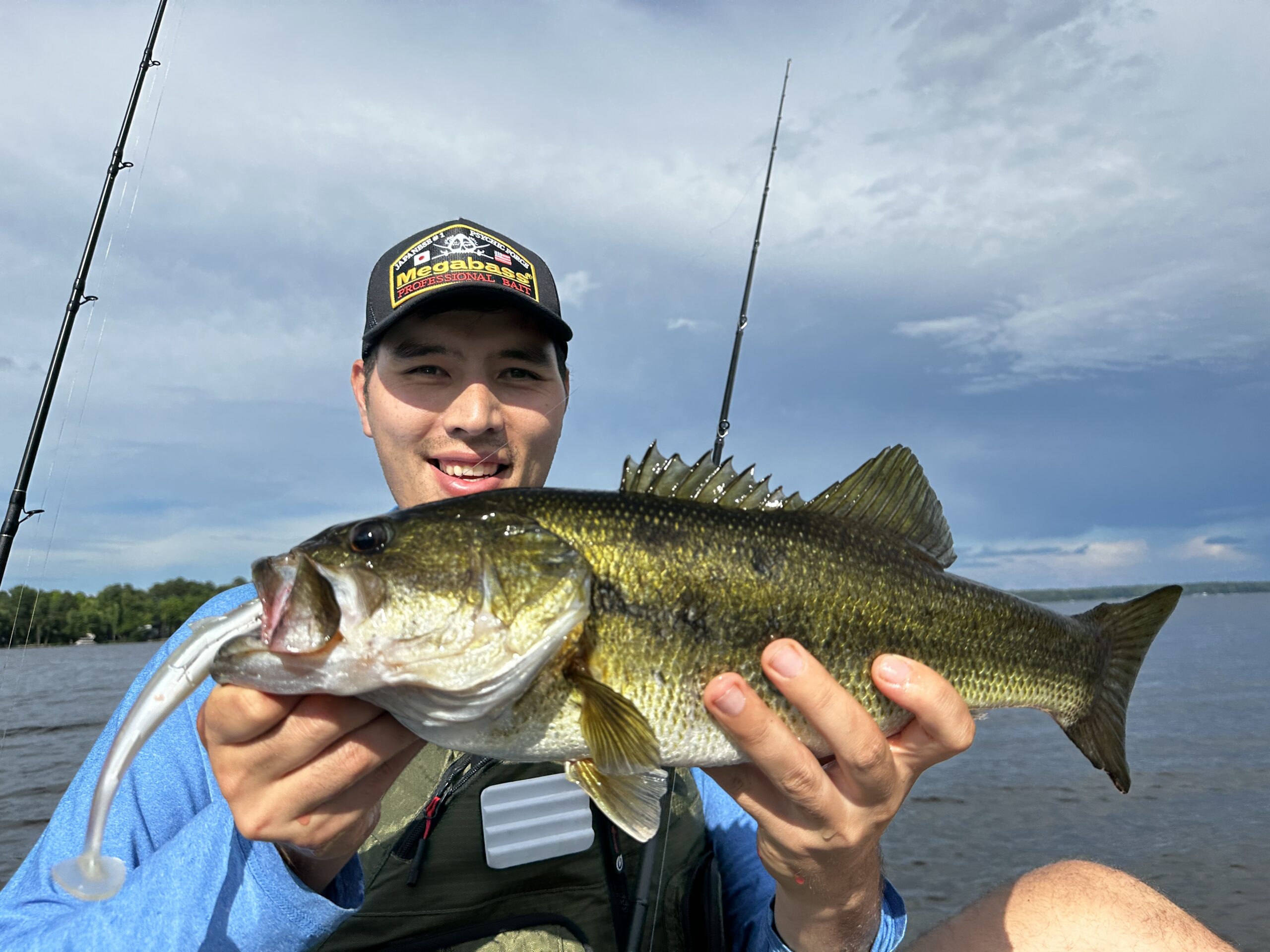
Savvy anglers have relied upon the Curado series of reels since the 1990s, but most of the models bearing that name have been 200-sized versions. Those can handle big baits in a pinch, but don’t necessarily have the heft to do it day-in, day-out. This one, on the other hand, is built for power, despite not weighing much more than the standard versions of a generation ago. Fill it up with 17-, 20-, or 25-pound line, mate it to your favorite swimbait rod, and you’re prepared for everything from rigged soft swimbaits to the giant glides. It’s a great Alabama Rig, too, and excels with giant crankbaits, especially when casting with the wind and smaller reels don’t have adequate spool capacity. My only regret is that they don’t have a high-speed option like many of the best baitcasting reels. I rely on the 6.6:1 but don’t have much use for the 4.7:1.
Best Bait Finesse Reel: Lew’s Custom Lite SS
Key Features
- Left- and right-hand retrieve
- 7.5:1
- 5 ounces
- 11 total bearings
Pros
- Lightweight
- 11 stainless steel double shielded ball bearings for smoothness
- Shallow spool turns easily
Cons
- Only one gear ratio available
Count me among the BFS doubters. While I would always rather use baitcasting gear than spinning tackle if possible, I thought that the latter was the only way to go with super light lures, especially when casting into the wind. Then I tried the Custom Lite SS. It has what I’d characterize as “big reel feel.” It has smooth performance, rigid tolerances, powerful draft, and premium components, but allowed me to cast and feel tiny lures at a distance. It’s extremely quiet and has a six pin centrifugal brake system that lets you completely dial in your casting. I tried it with micro-jigs, small crankbaits, and various wacky worms, and reached for it much more than expected. Rather than becoming a novelty or an occasional lark, I started to scheme new ways to use it.
Best High Speed: Abu Garcia Revo Rocket LP
Key Features
- Left- and right-hand retrieve
- 10.1:1
- 7.6 ounces
- 11 total bearings
Pros
- One of the fastest reels on the market
- 18 pounds maximum drag
- Quality braking system
Cons
- Not useful for many moving bait techniques.
The earliest iterations of reels faster than 7:1 or so left me confused because I recognized their advantages, yet felt I could not trust them completely. Something had to give, and usually the addition of more speed meant less overall torque. Abu Garcia seems to have addressed those past concerns, and they’ve done it in a reel that’s faster than the rest. Whether I’m working a popper around precise targets, dragging a Carolina Rig, or pitching a Senko to shallow boat docks, I consistently find myself making more presentations and keeping a bait in the strike zone longer as the direct result of this reel. I’ve had no problems with body flex or drag slippage. Any time I’m working a lure that’s manipulated with the rod rather than the reel, within typical lure weight confines, I’m looking for excuses to use this one.
Read Next: Abu Garcia Revo Rocket Spinning Reel Review
Best Computer Controlled: Shimano Curado 150 DC
Key Features
- Left- and right-hand retrieves
- 6.2:1, 7.4:1, and 8.5:1 gear ratios
- 7.8 or 7.9 ounces
- Seven total bearings
Pros
- Near backlash-free performance
- All of the benefits of Shimano’s legendary Curados, plus some
- Multiple gear ratios
- Remarkably dependable, even after abuse
Cons
- Whining noise on the cast annoys some anglers
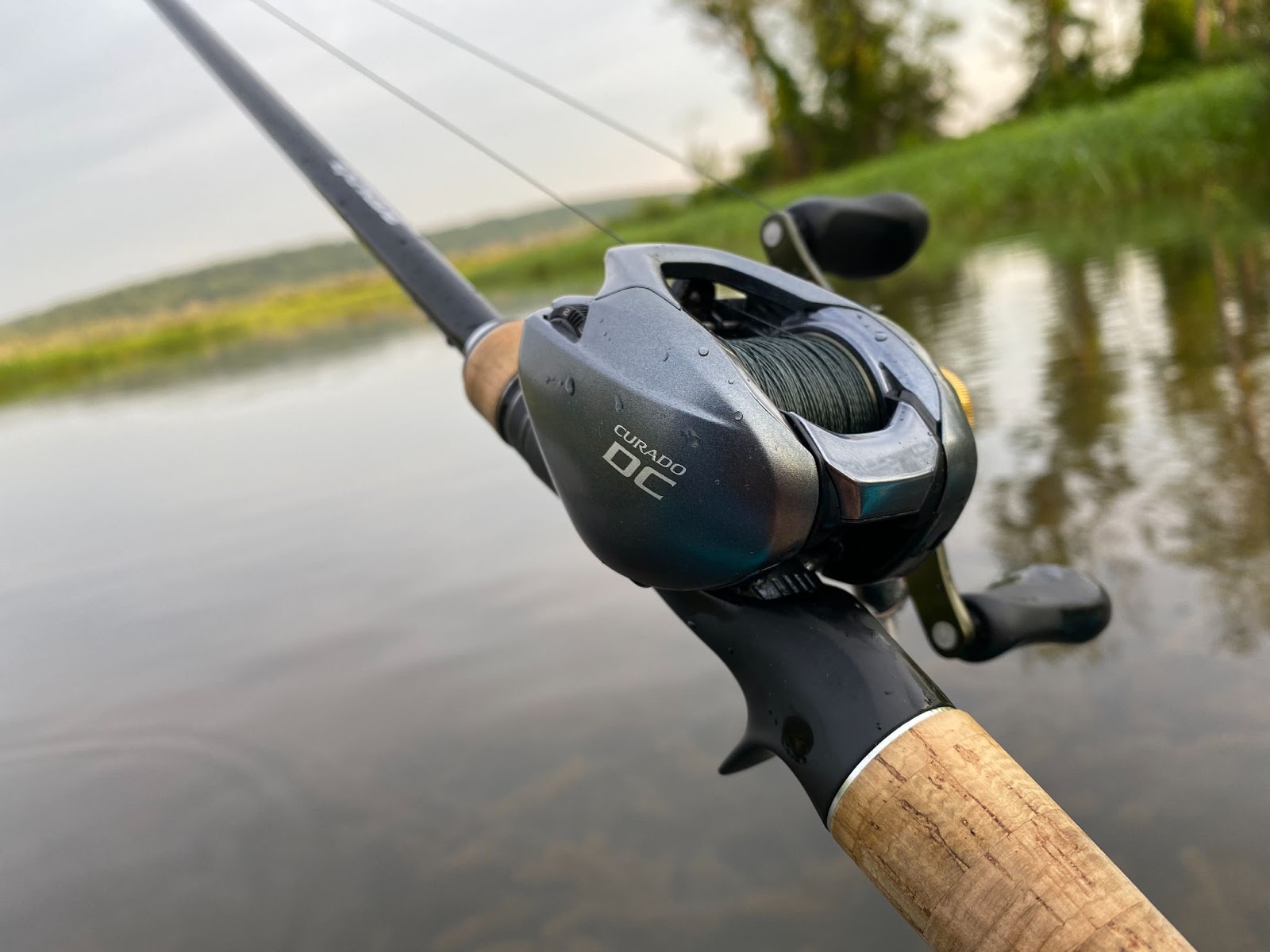
Even bass anglers with trained, veteran thumbs occasionally end up with the dreaded “professional overrun,” some of them requiring major tools and surgery to remove. They’re not only annoying and potentially costly, but picking them out requires time. Now, for a comparatively insignificant additional cost over Shimano’s traditional Curado, it’s possible to add the “Digital Control” (DC) system, which uses a microcomputer to provide optimal braking pressure. Frankly, no matter how good you are, this is a huge bonus, as it means this reel is more or less “set it and forget it.” I expected that the computerized portions would malfunction or degrade in some manner after substantial usage. But I’ve put mine through the wringer, and some heavy abuse, yet they still prevent backlashes and cast as far as they did straight out of the box.
Read Next: Shimano Curado DC Review
Most Innovative: Ark Gravity 5
Key Features
- Left- and right-hand retrieves
- 5.4:1, 6.4:1, 7.1:1, and 8.1:1 gear ratios
- 7.1 ounces
- Nine total bearings
Pros
- Wide range of gear ratios
- Reasonable price point
- Extensive range of adjustability
- Line indicator
Cons
- Only one spool size
Ark made their name in the rod space first, but rather than their reels just being a perfunctory add-on, they took their introduction as an opportunity to change things up. Ark’s patented magnetic Gravity Control braking system allows up to 60 different settings depending on lure weight, wind conditions, and angler preference to dial things in and make long casts a breeze. The spool is super-light, and the “floating cast shaft” disengages during casting to further increase the ease of lure presentation. In fact, even though there’s only one size available (in four different gear ratios), these reels act like models both bigger and smaller. They’re rock solid, with a cone-shaped line guide and a carbon fiber side plate, both of which are comfortable to use all day and won’t flex or give at inopportune times.
Read Next: Best Baitcasting Reels Under $100
Best for $50: H2OX Premier
Key Features
- Right-hand retrieve
- 6.6:1 and 7.3:1 gear ratios
- 7.4 ounces
- Six bearings
Pros
- Ultra-long casting performance
- Tight tolerances and rigid fame
- Comfortable EVA paddles on handle
Cons
- No left-hand version
- Not saltwater-suitable
After fishing this graphite framed reel for a while, I had to go back and make sure that the price tag hadn’t been a misprint. I consistently found myself grabbing it instead of reels that cost three, four, or five times as much. Out of the box, it was a jackrabbit, able to cast midrange lures longer distances than anything else I owned without backlashing. In fact, I had to tune it down to prevent lofting some of my prized topwaters into the woods. It’s comfortable and feels solid, even after several months of hard use. I used it not only for bass but for catfish and stripers, too, and the drag never balked or seized.
Read Next: Best Baitcaster Combos
Best Baitcasting Reels for Saltwater: Reviews & Recommendations
Here are the best baitcasting reel picks from OL contributor, Kevin Hughes. Read his full best saltwater baitcaster review for more information.
How I Chose the Best Saltwater Baitcasting Reels
Having spent most of my life fishing saltwater from Texas up through Virginia and everything in between, I’ve seen firsthand what happens when reels get exposed to salt over time. This experience helped me better evaluate the reels we tested, looking for key qualities and specs that made them suitable for the task. Components such as drag material, gearing, and frame material were critical. Functionality like drag pressure, brakes, and retrieve ratio were also key factors for consideration.
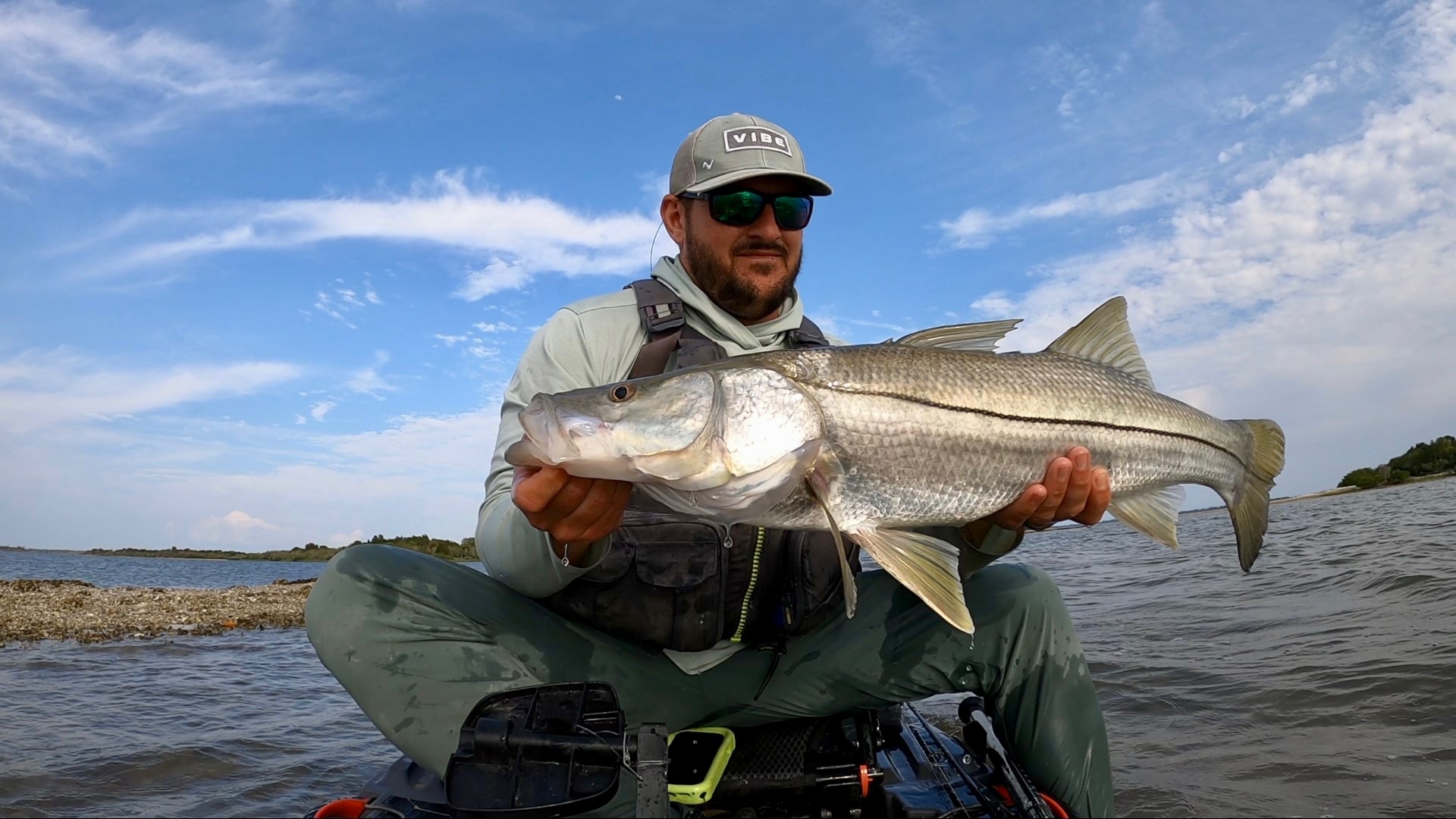
I also put these reels through the paces with real-world testing. Over several months, these reels got used in a variety of inshore environments, from the marshes of the Outer Banks in North Carolina, the flats of Biscayne Bay and the Everglades in Florida, and the oyster-filled backwaters of the Chesapeake Bay in Virginia. We caught everything from speckled trout and redfish to snook, tarpon, and striper.
Best Overall: Shimano Tranx
Key Features (150HG size)
- Weight: 6.7 ounces
- Line Capacity: 150 yards of 20-pound braid
- Bearings: 3+1
- Max Drag: 13 pounds
- Gear Ratio: 7.2:1
- MSRP: $219.99
Pros
- Extremely durable
- High-end gearing and seal
- Lightweight
- Smooth
- Large range of sizes (150-500)
Cons
- Limited drag strength
- Limited tuning ability
The Tranx lineup from Shimano has gained a well-earned reputation for withstanding anything thrown at them. The smallest reel in the series, the 150, is no exception. Despite its lightweight and smaller size, this reel still feels rock solid in your hand. It’s designed to cast and fight fish in the salt all day, every day.
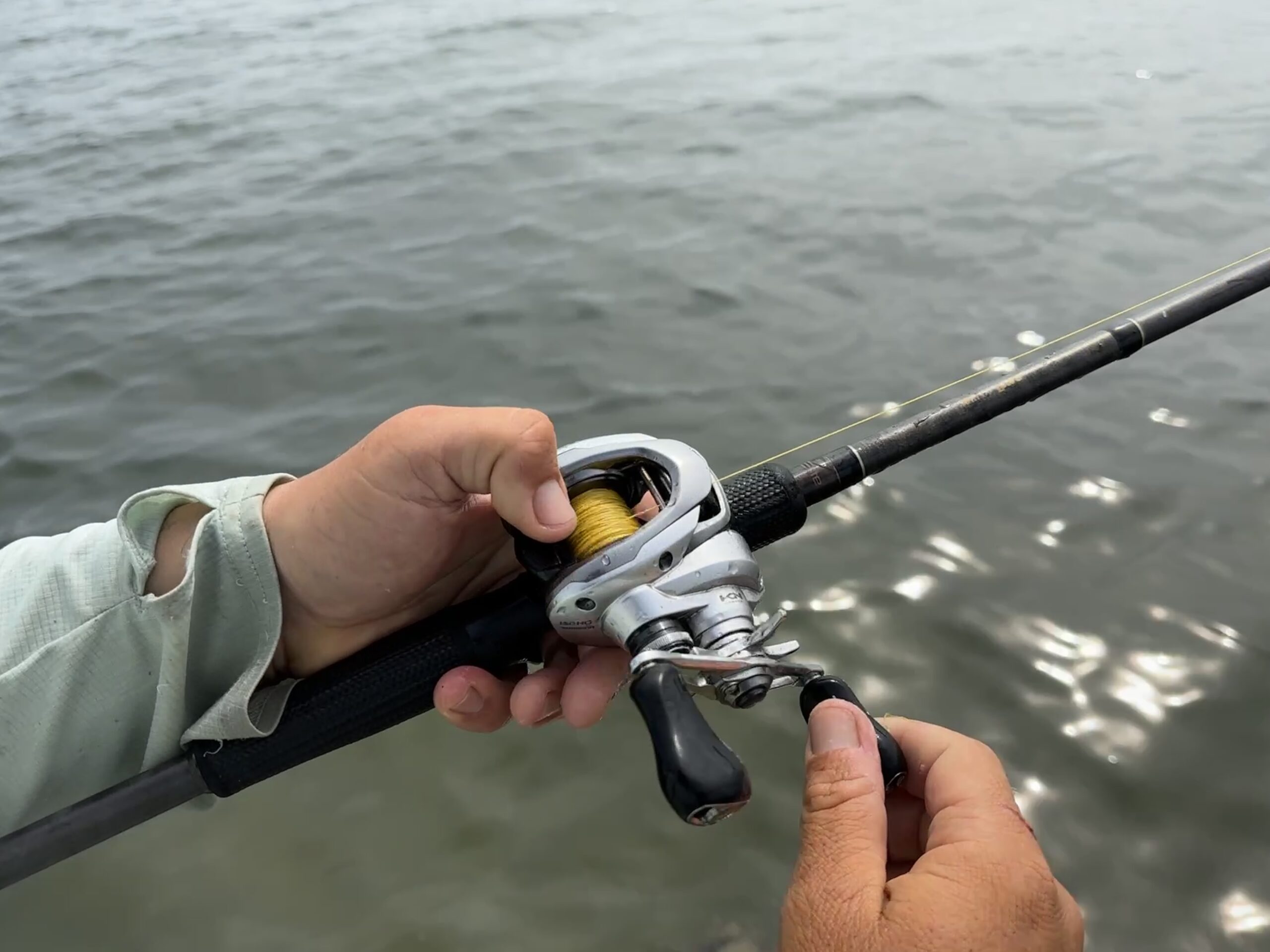
The Tranx 150 is a reel for anglers pushing their gear to the limits. It lacks some of the smoothness and featherlight feel of the Chronarch G, but it more than makes up for its durability. The delicate internal components are housed within a rigid metal frame that prevents flex and warping, making this reel ideal for intense fights and long days on the water. It also utilizes Shimano’s CoreProtect technology, which is a protective coating that prevents corrosion and adds extra strength to the core components of the reel.
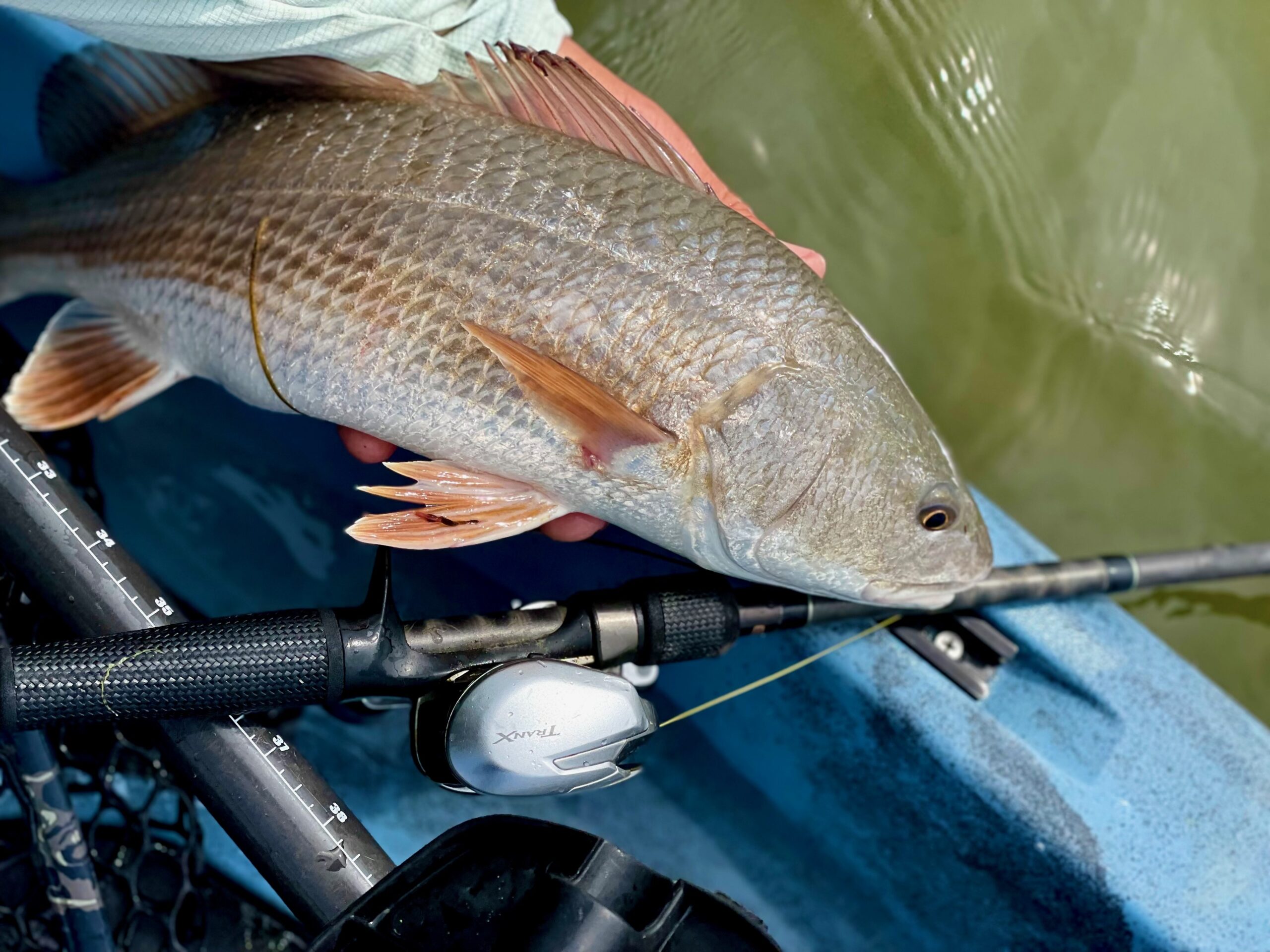
While the reel does boast a smooth carbon dag, the stopping power is somewhat lacking at 13 pounds. That’s not terrible, but it is a little less than one would expect for a reel designed with such heavy-duty use in mind. That said, this reel will have more than enough power for most inshore applications. Additionally, the Tranx comes in several sizes, from 150 all the way up to 500. The 150 is ideal for inshore casting applications, the 300 is perfect for bucktailing fluke and throwing big topwaters for stripers, and the 400 size with the power handle is the best saltwater baitcasting reel for deep jigging. The larger sizes provide significantly more drag and are a great option for expanding beyond light inshore use.
Read Next: Best Saltwater Fishing Rods
Best for Jigging: Penn Fathom
Key Features (300 size)
- Weight: 9.2 ounces
- Line Capacity: 310 yards of 20-pound braid or 240 yards of 12-pound mono
- Bearings: 6+1
- Max Drag: 30 pounds
- Gear Ratio: 7.3:1 or 9.2:1
- MSRP: $269.95
Pros
- Extremely strong drag
- Impressive gear ratios and retrieve rate
- Incredible line capacity
- Large range of sizes/specs
Cons
- Very heavy
- Lacks finesse
Penn has long been a staple in the saltwater world, with its line of spinning and conventional reels setting the standard for balancing cost with performance. Despite this, they’re relatively new to the low-profile baitcaster scene, but you’d never know it after using the Fathom. This reel is packed with all the quintessential Penn traits that make it feel like a true saltwater tool while still maintaining an impressive balance and comfort that are essential to low-profile reels. It’s a powerful, comfortable reel ideal for cranking on big fish at depth.
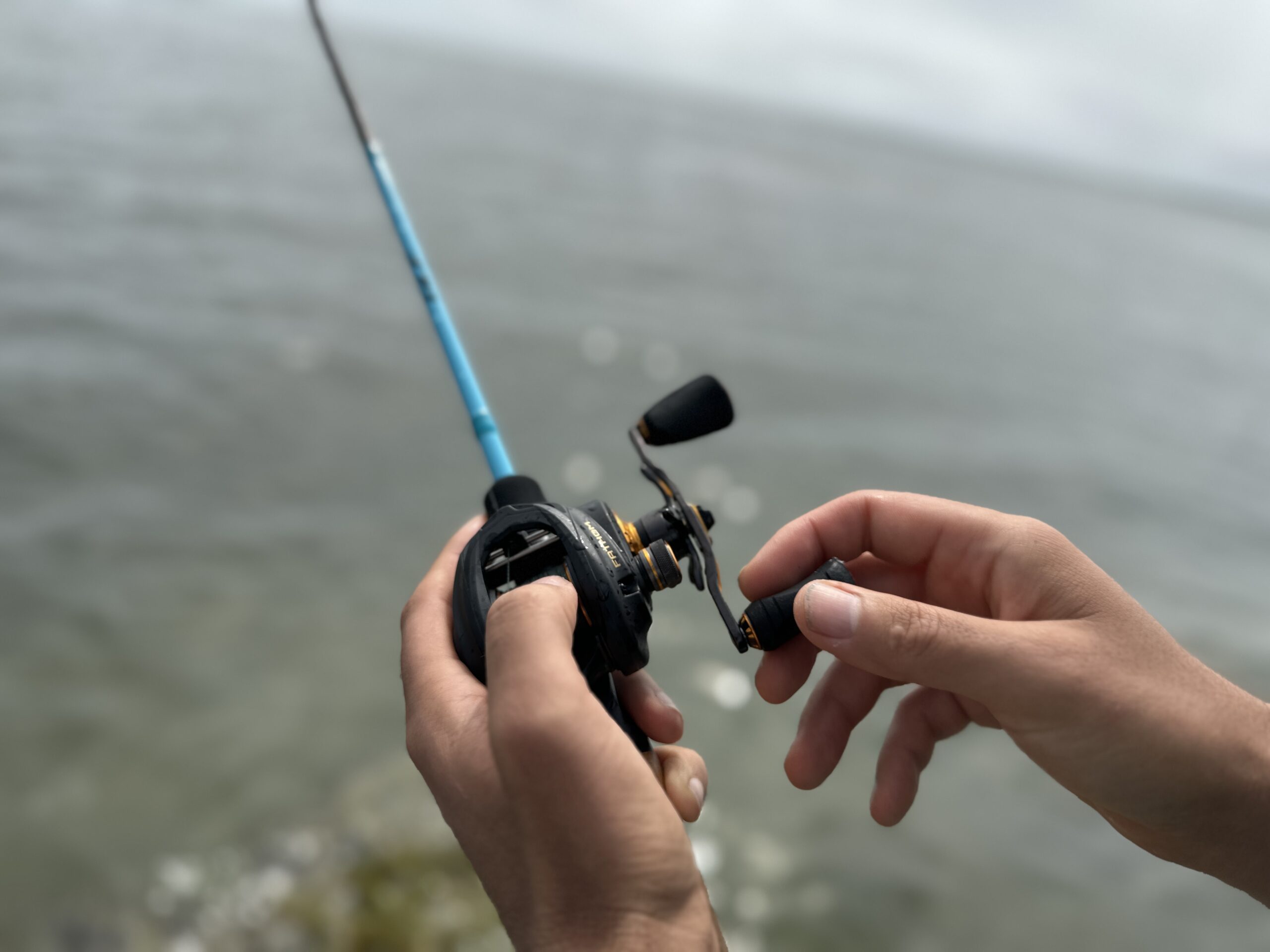
With a full metal body and beefy frame, the Fathom feels like a workhorse. This saltwater baitcasting reel boasts 30 pounds of drag strength; it’s easily the top of this list when it comes to pulling ability. With the 9.2:1 ratio model also reeling in a ridiculous 43 inches of line per crank, this reel is tailor-made for jigging and bottom fishing. Add to that the enormous line capacity, and you have a reel that can winch up powerful fish at depth.
All that power and strength does come at a cost, unfortunately. This reel is much heavier than other reels in the class, making it tough to imagine casting all day long. It also lacks the smooth feel and finesse qualities of the other inshore low-profile reels on this list. Ultimately, this reel is designed with jigging in mind, and that’s where it will excel.
A unique combination of power, torque, and comfort, the Fathom is a versatile option for anglers looking to fish inshore to nearshore wrecks and reefs.
Best Finesse Inshore Reel: Shimano Chronarch G
Key Features (150HG model)
- Weight: 6.5 ounces
- Line Capacity: 150 yards of 20-pound braid, 120 yards of 10-pound mono
- Bearings: 8+1
- Max Drag: 11 pounds
- Gear Ratio: 7.1:1
- MSRP: $299.99
Pros
- Extremely lightweight
- Durable salt-resistant Ci4+ carbon frame
- Exceptionally smooth
Cons
- Limited drag capacity
- Limited size range
- Expensive
Simply put, this saltwater baitcasting reel is a joy to fish. Its lightweight design and ultra-smooth feel make it one of the most comfortable reels I’ve ever used inshore. It’s loaded with advanced modern reel technology and has proven quite capable of handling long days on the salt. It’s the ideal reel for casting lighter lures and finesse fishing inshore.
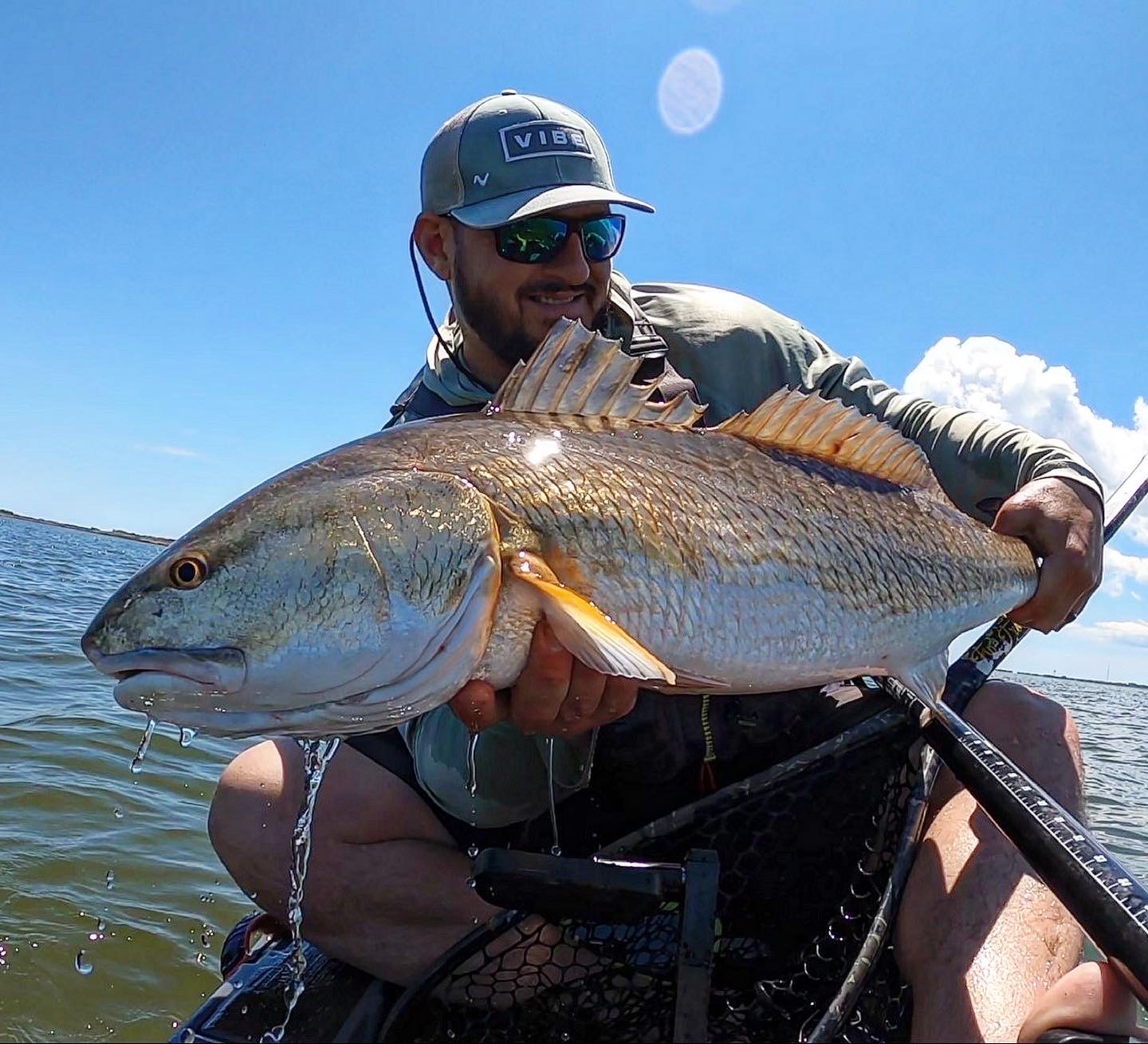
The Chronarch G is made of ultra-light yet durable carbon material and features MicroModule gearing, which makes this reel as smooth as it gets. It also has a buttery soft feel on the cast. I’ve cast everything from light swimbaits to heavy topwaters on this reel, and the braking system was easy to tune to keep the spool backlash-free. Despite its lightweight feel and complex gearing, this reel is sealed and durable, designed to withstand inshore saltwater use.
The 11-pound drag strength won’t stop big fish from heading back into the magroves or around bridge pilings. That said, as a reel aimed primarily at light inshore use, the drag isn’t as critical as overall performance. The narrow spool also helps the reel with casting accuracy and allows the use of lighter lines.
Read Next: Best Saltwater Baitcasting Reels
Things to Consider Before Buying a Baitcasting Reel
Line Capacity
Whether you’re using braid, monofilament or fluorocarbon, your reel has to hold enough line to handle your longest casts, and also to deal with the occasional break off or clip off with a retie.
Gear Ratio
A reel’s gear ratio refers to how many times the spool turns for each turn of the reel handle. A 7.1:1 gear ratio means the spool makes 7.1 rotations for each rotation of the handle. The higher the gear ratio, the faster the reel.
While gear ratios in the 6:1 and 7:1 range will handle most applications, and some anglers are comfortable with their entire arsenal being the same speed, sometimes faster or slower provides an advantage. With flipping and pitching or topwaters, a faster reel will get you more casts in the course of the day. Historically, faster reels sacrificed power, but that’s not always the case anymore.
Spool Size
A narrow, deep spool may hold the same amount of line as a wide, shallow spool, but they may not perform the same way. The former may have a substantially different amount of inches of line retrieval at different points in the cast. Find a reel that fits your hands and where the line pulls off smoothly and evenly.
Bearings
There’s been an arms race of sorts to see who can cram the most bearings into a baitcasting reel, and while there’s still some debate as to how many are necessary or even helpful, assume that more equals better.
Final Thoughts on the Best Baitcasting Reels
Sometimes our reel choices are a matter of what we’re used to, or what feels best, not necessarily what performs best. We get used to certain brands, styles, and sizes, to our own detriment. I’m a big advocate of keeping things simple, and if possible I’d like to have the same reels for everything across the board. I also realize that you can be more efficient in some instances with a 10:1 gear ratio than with a 5:1 gear ratio. Realistically, multiple baitcasting reels are a necessity for most of us, and it pays to compare features, price, and yes, feel. Use our reviews to help you choose the best baitcasting reel for your needs and budget.
Bass Reels
- Best Premium: Daiwa Steez A 100
- Best for Swimbaits: Shimano Curado 300K
- Best Bait Finesse Reel: Lew’s Custom Lite SS
- Best High Speed: Abu Garcia Revo Rocket LP
- Best Computer Controlled: Shimano Curado 150 DC
- Most Innovative: Ark Gravity 5
- Best Budget: H2OX Premier
Saltwater Reels
- Best Overall: Shimano Tranx
- Best for Jigging: Penn Fathom
- Best Finesse Inshore Reel: Shimano Chronarch G
